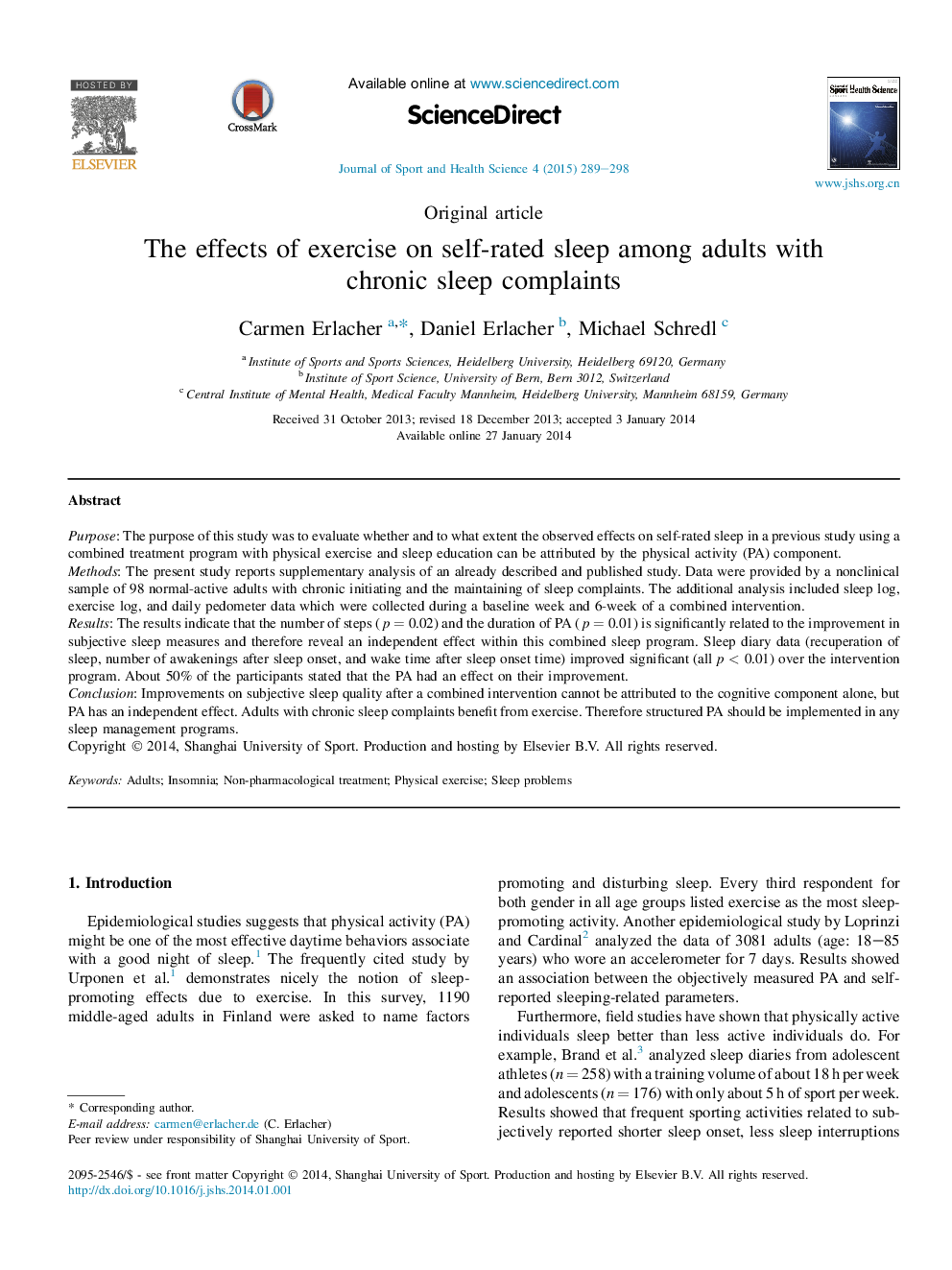| Article ID | Journal | Published Year | Pages | File Type |
|---|---|---|---|---|
| 1084204 | Journal of Sport and Health Science | 2015 | 10 Pages |
PurposeThe purpose of this study was to evaluate whether and to what extent the observed effects on self-rated sleep in a previous study using a combined treatment program with physical exercise and sleep education can be attributed by the physical activity (PA) component.MethodsThe present study reports supplementary analysis of an already described and published study. Data were provided by a nonclinical sample of 98 normal-active adults with chronic initiating and the maintaining of sleep complaints. The additional analysis included sleep log, exercise log, and daily pedometer data which were collected during a baseline week and 6-week of a combined intervention.ResultsThe results indicate that the number of steps (p = 0.02) and the duration of PA (p = 0.01) is significantly related to the improvement in subjective sleep measures and therefore reveal an independent effect within this combined sleep program. Sleep diary data (recuperation of sleep, number of awakenings after sleep onset, and wake time after sleep onset time) improved significant (all p < 0.01) over the intervention program. About 50% of the participants stated that the PA had an effect on their improvement.ConclusionImprovements on subjective sleep quality after a combined intervention cannot be attributed to the cognitive component alone, but PA has an independent effect. Adults with chronic sleep complaints benefit from exercise. Therefore structured PA should be implemented in any sleep management programs.
